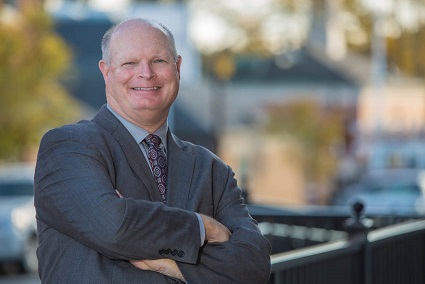The 2018 PRSA Southeast District Conference will attract hundreds of public relations and communications professionals from across the region. The gathering will reflect the modern workplace: Baby Boomers, Gen Xers and Millennials all together, interacting and seeking to understand one another.
 This blending of generations is having a major impact on organizations. At one of the Thursday breakout sessions, Tim Moore of DEAG Sales Training will walk attendees through this “Great Generational Shift” and what organizations need to do to navigate it. Moore is a multi-generational relations expert and an accomplished author and
This blending of generations is having a major impact on organizations. At one of the Thursday breakout sessions, Tim Moore of DEAG Sales Training will walk attendees through this “Great Generational Shift” and what organizations need to do to navigate it. Moore is a multi-generational relations expert and an accomplished author and
speaker with over three decades of experience in marketing, sales, and training. He is
the owner and principal of the sales consultancy “Dancing Elephants” Sales Training and
is Editor of the on-line daily magazine Carolina Business Connection in North Carolina’s
Research Triangle region.Moore’s experience in sales and training spans over thirty years and numerous Fortune 500 companies, including PepsiCo, Gillette, Dow Chemical, and L’Oreal USA.
We caught up with Tim for a preview of his talk:
What impacts is the Great Generational Shift creating for organizations?
There is a “Great Generational Shift” underway in the workforce today. This is the post-Baby Boomer shift that demographers have been anticipating for decades. It is not only a generational shift in the numbers in the workforce, this is also an epic turning point in the norms and values of the workforce, and a corresponding transformation in the very fundamentals of the employer-employee relationship.
Generation is one of the most important factors that shape people’s opinions and views. We all see the world through our own generational filter. Surveys and market research have shown that different generations have very distinct views about products, politics, religion, careers, and just about everything else. This “Great Generational Shift” presents a whole new set of challenges for employers in every industry, employees of all ages, and for managers at every level.
First-wave Boomers now steadily exiting the workforce in large numbers, by some counts as many as 12,000 Baby Boomers a day are retiring in the United States.
What are we learning about millennials in the workplace?
Millennials are no longer the young people in the workplace. Many Millennials who are in their mid 30’s have felt stuck in positions for years with the unknown in unstable economic times.
Millennials are ready to step forward into management and leadership positions but many companies where management has mostly been Baby Boomers and older Gen Xer’s for years have not prepared their organizations for the great generational shift that is now just beginning to wreak havoc in the workplace. The Millennials are quick to move on to the next job challenge if they feel they are not being prepared for the responsibilities that will be expected of them.
What can we expect from Generation Z as they come of age?
Gen Z or as some call them iGens, are coming of age in good economic times! Some call today’s teenagers the “Pivotal Generation”. They share the technological savvy and many of the forward-thinking views of millennials, but they also pivot toward many of the same traditional values as Baby Boomers. They will – want to work for, and earn, what they get. They are motivated toward traditional Boomer-associated ideas of success – money, education, a career. This may be a reaction to the “entitled” epithet that they hear hurled so often at millennials.
Their beliefs, however, are far more liberal than Boomers. They’re believers in equality – racial equality, gender equality and sexual orientation equality. In pushing these agendas, however, they exchange the idealism of the preceding generation for a pragmatism that is more rooted in work ethic and practical solutions. To understand the Gen Z / iGen one must understand that reality, and even more importantly, uniqueness matters, and that one size does not fit all when it comes to social media.
While image is still important to Gen Z / iGens – they are, remember, teenagers – they have grown up in an era that stresses body positivity and rejects traditional ideas of beauty and perfection. What they really want, is to be unique. They want products to show them, in real terms, how they can help them create their own image – reveling in its flaws, accentuating its virtues.
Even more than millennials, they have grown up connected to one another through social media, and in so doing, they have developed their own preferences and etiquette for its use. Snapchat has usurped Facebook and other platforms as the preferred model for sharing their life experiences, while Facebook — better known as: My Parents’ Social Media – is used for informational purposes and Instagram for creating and building a preferred image of themselves.
Have we written off baby boomers?
Why bother with Baby Boomers, you ask? Shouldn’t millennials be your primary focus?
Guess what? All those tools you use to get millennials attention are also important to another smaller, and yet still vitally important, demographic – Baby Boomers.
Baby Boomers are far from the technologically illiterate stereotype as which they’re sometimes portrayed. Ninety-two percent of them say they use social media (mainly Facebook) and three-fourths of them have a smartphone. What they value in products and services will also sound familiar: Quality over brand name, with the caveat that once they find a brand name they like, they develop some loyalty to it.
The differences, are in how Baby Boomers use technology – or don’t. They’re less likely to shop, text or post on social media, and they’re less likely to be influenced by social media. So social media may not be your primary tool for Baby Boomers. But it still needs to be in the toolbox.
While Baby Boomers are a smaller segment of the market, there are good reasons for paying attention to them.
According to data from the Pew Research Center, 27 percent of Baby Boomers are affluent – defined as a household income over $100,000 and savings over $250,000. That’s the highest percentage of any generational group.
They largely feel younger than their years, their life expectancy is growing, they’re dedicated to charitable giving and a healthy lifestyle, and they’re hungry for interesting life experiences. In fact, a higher percentage of high-income Baby Boomers (73 percent) than millennials (69 percent) say they prefer to spend money on experiences.
So keep doing what you’re doing. Create and maintain a first-class digital experience. Engage with your Baby Boomer customers. Provide value across all platforms. Just know that millennials aren’t the only ones who will appreciate it.
What can conference attendees expect to learn from your presentation?
The “Great Generational Shift” is underway. Have you planned for this day? What should you be doing to prepare? In this breakout session you will view the demographics that will enlighten you about the changes that the shift is bringing to all workplaces and all industries in our country. Attendees will walk away with an understanding of WHY each generation thinks like do and what strategies you should use to gain their attention. The truth is that what you, your company and your team doesn’t know about “The Great Generational Shift” will impact your bottom line. This presentation is highly energetic, highly engaging, and full of actionable ideas. You will have fun and walk away with a new perspective
The PRSA Southeast District Conference takes place April 18-20, 2018, in Raleigh, N.C. For more information or to register, visit prsasummit.org.
